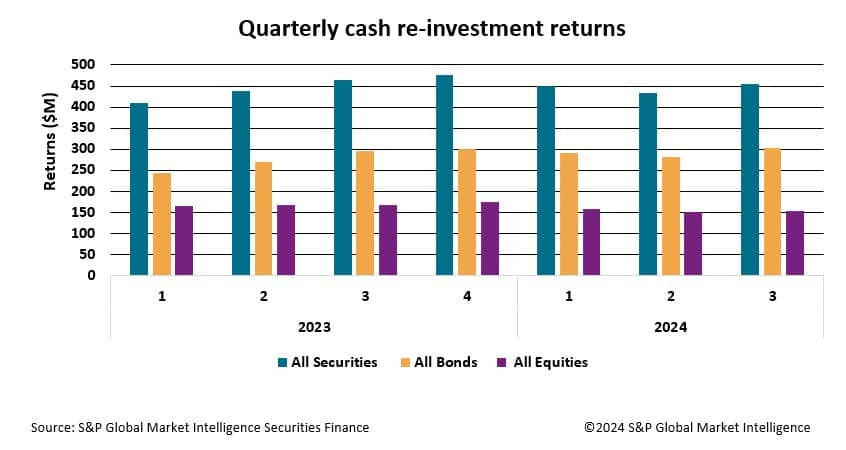Cash reinvestment returns rose in Q3 amid ongoing uncertainty regarding the Fed’s path to a neutral rate, writes Matt Chessum, director of securities finance at S&P Global Market Intelligence.
Uncertainty regarding the timing and size of Federal Reserve interest rate cuts benefitted cash reinvestment pools within securities lending programs during the third quarter. These programs, which loan securities in exchange for cash collateral, rely on cash reinvestment strategies to generate additional income. But with shifting economic indicators and ambiguity around Fed policy, particularly in light of the upcoming U.S. presidential election and a recently disinverted yield curve, reinvestment pools face added complexities in pricing short-term instruments like commercial paper, certificates of deposit (CDs), reverse repos, and to an extent overnight deposits.

The broader economic context, marked by ongoing inflation concerns alongside robust economic data, has kept short-term rates higher than typical in anticipation of a future rate cut. Instruments like commercial paper and CDs, often priced based on rate expectations, remain elevated as issuers delay rate adjustments while awaiting clear Fed signals. With an election looming, the Fed may also tread more cautiously than markets expect, to avoid any perception of policy interference, prolonging uncertainty in yield structures.
Instruments like reverse repos and overnight deposits respond acutely to Federal Reserve policy shifts, and in times of uncertainty, they remain attractive for reinvestment pools looking for flexibility. Reverse repo rates, influenced by the Fed’s overnight reverse repurchase (ON RRP) operations and short-term funding needs, remain high in a market hedging against potential rate swings. Overnight deposits, while offering flexibility, expose reinvestment pools to reinvestment risk if the Fed enacts rate cuts, which could reduce their yield opportunities.
“Securities lending reinvestment pools find themselves well-positioned in the current environment, bolstering returns by capitalizing on both the yield curve’s recent disinversion and the current policy ambiguity. As the Fed’s direction unfolds, pools that have locked in elevated yields along the curve will stand to benefit even if cuts materialize, ensuring strategic positioning amidst both economic and political uncertainties,” Chessum wrote.

